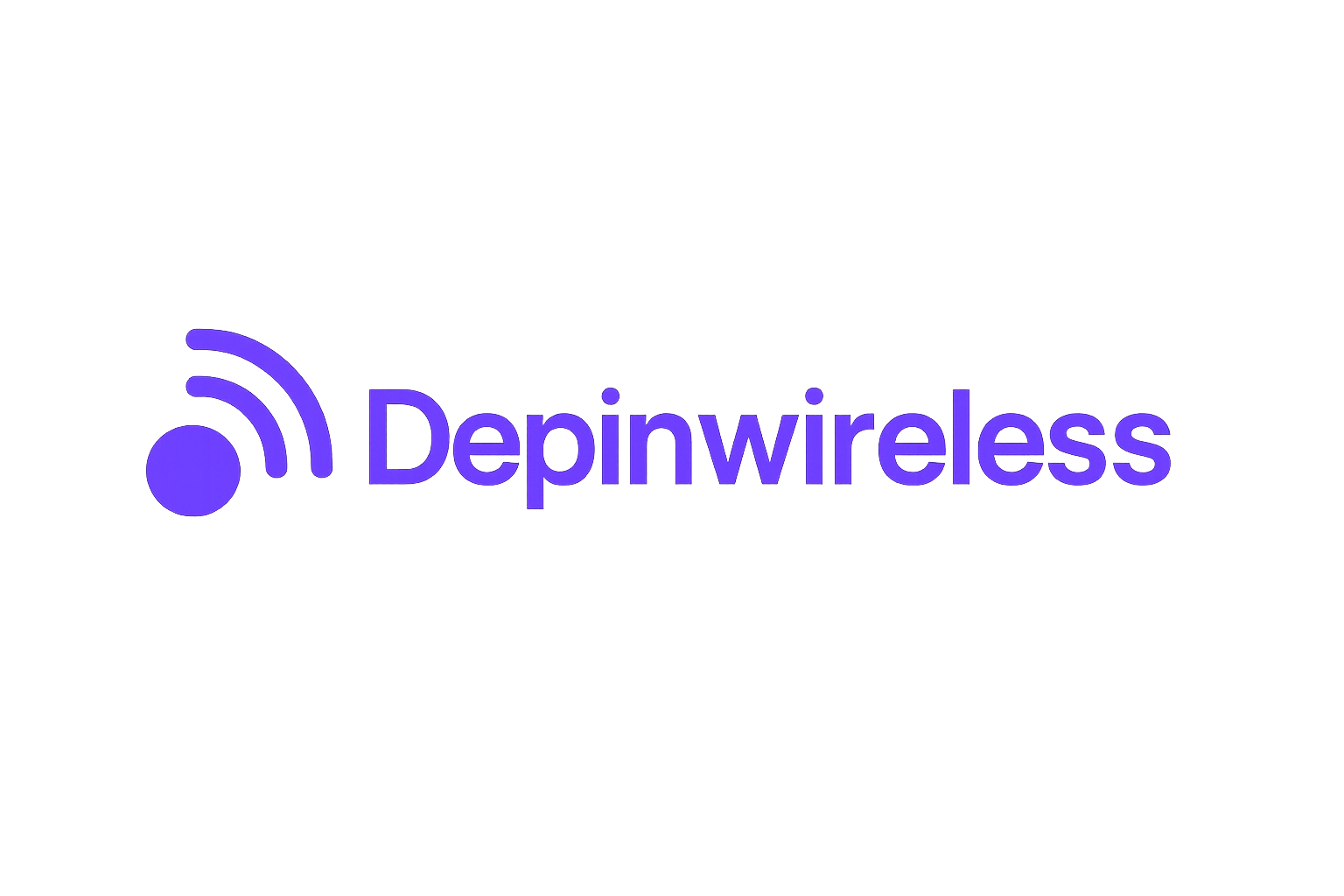
Helium’s blockchain-powered 5G network is rapidly redefining the landscape of IoT connectivity. Launched in 2019 by Amir Haleem, Helium introduced a radical vision: empower individuals and organizations to deploy their own wireless hotspots, collectively creating a decentralized wireless infrastructure. Today, this model is not just theoretical, it is live, growing, and already impacting real-world applications from smart cities to business automation.
Decentralized Wireless: Disrupting Traditional Connectivity
Unlike legacy telecom networks, which rely on centralized control and capital-intensive infrastructure, the Helium 5G network harnesses the power of distributed ownership. Anyone can purchase a Helium-compatible hotspot and contribute to network coverage. This approach dramatically lowers entry barriers for new participants and accelerates deployment in underserved or hard-to-reach areas.
The incentive mechanism is simple yet powerful: operators who provide coverage and transfer data earn Helium Network Tokens (HNT). As of October 27,2025, HNT trades at $2.22, reflecting both recent momentum ( and 5.71% in the last 24 hours) and growing confidence in decentralized wireless models.
This tokenized incentive structure is more than just a clever economic layer, it’s the engine driving Helium’s rapid expansion. By rewarding actual coverage and data transfer with transparent blockchain accounting, Helium sidesteps many inefficiencies that plague traditional mobile networks.
Blockchain-Powered Security and Transparency
The backbone of Helium’s ecosystem is its blockchain architecture. Every transaction, whether it’s proof-of-coverage verification or data packet routing, is immutably recorded on-chain. This ensures transparent rewards distribution to hotspot operators while providing robust security for network participants.
For IoT deployments, where device integrity and data privacy are paramount, blockchain brings a new level of trust. Enterprises exploring smart city solutions or industrial automation can rely on verifiable records of device activity without depending on a single provider’s infrastructure or policies.
Expanding Use Cases: From Smart Cities to Business Automation
The versatility of Helium’s decentralized wireless platform is evident in its adoption across diverse sectors. In urban environments, city planners are leveraging community-built networks to power connected sensors for traffic management, air quality monitoring, and public safety initiatives. For businesses, private hotspot deployments offer secure connectivity for asset tracking, logistics optimization, and facility automation, all without tying operations to monopolistic carriers.
This democratization of network ownership means that both major enterprises and small businesses can benefit from cost-effective IoT connectivity tailored to their unique requirements. The result? Faster innovation cycles, reduced operational costs, and greater resilience against single points of failure.
6-Month Price Performance of Helium (HNT) vs. DePIN and Major Crypto Assets
Comparing Helium (HNT) with other DePIN tokens and major cryptocurrencies over the past 6 months using real-time market data (as of 2025-10-27).
| Asset | Current Price | 6 Months Ago | Price Change |
|---|---|---|---|
| Helium (HNT) | $2.22 | $1.96 | +13.3% |
| Filecoin (FIL) | $1.65 | $1.54 | +7.1% |
| Render Token (RENDER) | $2.52 | $2.50 | +0.8% |
| Akash Network (AKT) | $0.7801 | $0.7019 | +11.1% |
| Arweave (AR) | $4.36 | $4.07 | +7.1% |
| Ethereum (ETH) | $4,129.00 | $3,895.34 | +6.0% |
| Bitcoin (BTC) | $114,312.00 | $125,512.00 | -8.9% |
| IoTeX (IOTX) | $0.0117 | $0.0116 | +0.4% |
Analysis Summary
Helium (HNT) has outperformed most DePIN tokens and major cryptocurrencies over the past 6 months, posting a 13.3% gain. Akash Network (AKT) also showed strong growth (+11.1%), while Bitcoin (BTC) experienced a notable decline. Other assets, including Filecoin (FIL), Arweave (AR), and Ethereum (ETH), saw modest gains, reflecting a period of relative market stability.
Key Insights
- Helium (HNT) leads the DePIN sector with a 13.3% price increase over 6 months.
- Akash Network (AKT) is the second-best performer among DePIN tokens, up 11.1%.
- Bitcoin (BTC) is the only asset in this comparison to post a negative 6-month return (-8.9%).
- Most other assets, including Filecoin (FIL), Arweave (AR), and Ethereum (ETH), showed moderate positive changes, indicating overall market stability.
All prices and percentage changes are sourced directly from the provided real-time market data as of 2025-10-27. The comparison uses exact historical and current prices for each asset, ensuring accuracy and consistency.
Data Sources:
- Main Asset: https://www.coingecko.com/en/coins/helium
- Filecoin: https://www.coingecko.com/en/coins/filecoin
- Render Token: https://www.coingecko.com/en/coins/render
- Akash Network: https://www.coingecko.com/en/coins/akash-network
- Arweave: https://www.coingecko.com/en/coins/arweave
- Ethereum: https://www.coingecko.com/en/coins/ethereum
- Bitcoin: https://www.coingecko.com/en/coins/bitcoin
- IoTeX: https://www.coingecko.com/en/coins/iotex
Disclaimer: Cryptocurrency prices are highly volatile and subject to market fluctuations. The data presented is for informational purposes only and should not be considered as investment advice. Always do your own research before making investment decisions.
The Road Ahead: Incentives Driving Network Growth
As demand for high-bandwidth applications grows, think autonomous vehicles or next-gen industrial robotics, the need for reliable decentralized wireless will only intensify. With its integration into Solana’s high-performance blockchain ecosystem and ongoing partnerships with industry titans for proof-of-concept pilots (read more about smart city deployments here), Helium is strategically positioned at the intersection of Web3 incentives and real-world connectivity challenges.
Helium (HNT) Price Prediction 2026–2031
Professional Forecast Based on Network Growth Metrics, Market Trends, and 5G/IoT Adoption
| Year | Minimum Price (Bearish) | Average Price (Base Case) | Maximum Price (Bullish) | YoY % Change (Avg) | Key Scenario Insights |
|---|---|---|---|---|---|
| 2026 | $1.80 | $2.60 | $4.20 | +17% | Ongoing 5G rollout, moderate user growth, regulatory clarity |
| 2027 | $1.50 | $2.95 | $5.10 | +13% | Expanded partnerships, increased IoT adoption, possible market volatility |
| 2028 | $1.35 | $3.40 | $6.25 | +15% | Decentralized network maturity, new enterprise integrations |
| 2029 | $1.20 | $4.05 | $7.90 | +19% | Mainstream IoT deployments, increased network utilization |
| 2030 | $1.10 | $4.80 | $9.60 | +19% | Potential global expansion, enhanced token utility in DePIN |
| 2031 | $1.00 | $5.55 | $11.40 | +16% | Widespread IoT/5G use, strong DePIN sector growth |
Price Prediction Summary
Helium (HNT) is positioned for moderate to strong growth through 2031, driven by its expanding decentralized 5G and IoT network. The average price is projected to rise steadily as adoption increases, with the bullish scenario reflecting major enterprise partnerships and global expansion. Bearish scenarios account for regulatory hurdles and slower-than-expected IoT market growth. The network’s unique DePIN model may offer resilience compared to traditional telecoms.
Key Factors Affecting Helium Price
- Network growth and 5G/IoT device adoption rates
- Regulatory developments impacting DePIN and crypto sectors
- Partnerships with telecoms and IoT enterprises
- Competition from other decentralized and traditional network providers
- Tokenomics and reward structure changes
- Broader crypto market cycles and investor sentiment
Disclaimer: Cryptocurrency price predictions are speculative and based on current market analysis.
Actual prices may vary significantly due to market volatility, regulatory changes, and other factors.
Always do your own research before making investment decisions.
Helium’s network expansion is not just a technical feat, but a community-driven movement that is actively reshaping how connectivity is delivered and monetized. The ability for individuals to deploy hotspots and directly participate in the digital infrastructure economy is a radical departure from the top-down models of the past. This shift has drawn attention from both grassroots technologists and institutional investors, who recognize the potential for decentralized wireless to disrupt multi-billion dollar markets.

Real-world case studies underscore Helium’s momentum. From municipal sensor grids in smart cities to asset tracking in logistics hubs, decentralized 5G deployments are enabling solutions previously cost-prohibitive or logistically unfeasible under legacy networks. The Helium 5G network’s flexibility allows for rapid scaling and adaptation as new IoT use cases emerge. Operators are already exploring integrations with other decentralized protocols, further extending the reach and utility of the network.
One notable aspect of Helium’s model is its capacity to fill coverage gaps that traditional carriers often overlook. In rural or economically disadvantaged regions, hotspot operators can generate HNT rewards while providing essential connectivity for local businesses, farms, or public services. This bottom-up approach not only expands access but also fosters local economic empowerment, participants have a direct stake in the success of their network.
Challenges and Forward Strategies
Despite its promise, the decentralized wireless paradigm faces significant hurdles. Regulatory uncertainty around spectrum usage, especially in the 5G CBRS band, remains a point of friction in some jurisdictions. Additionally, while Helium’s incentive model has proven effective at bootstrapping coverage, long-term sustainability will hinge on actual network usage and enterprise adoption, not just speculative hotspot deployment.
To address these challenges, Helium’s leadership and community are prioritizing partnerships with established telecoms, device manufacturers, and IoT integrators. The move to Solana’s blockchain enhances transaction throughput and efficiency, preparing the network for the anticipated surge in data-intensive IoT applications. Ongoing pilot programs with Tier 1 carriers and Fortune 500 enterprises will be critical in validating Helium’s value proposition at scale.
For investors and industry professionals, the current HNT price of $2.22 reflects a market in transition, balancing short-term speculation with the long-term fundamentals of decentralized infrastructure. As new use cases prove out and regulatory clarity improves, the token’s value will increasingly track real-world adoption metrics.
Looking ahead, Helium’s blueprint offers a glimpse into the future of wireless: networks that are open, permissionless, and economically inclusive. The intersection of blockchain incentives and physical infrastructure has set the stage for an era where connectivity is not just a utility, but a shared resource governed by its users. As more organizations and communities embrace decentralized 5G deployments, expect Helium and similar DePIN projects to play a pivotal role in powering the next generation of IoT applications.
For a deeper dive into how Helium 5G networks are transforming urban IoT deployments, explore our detailed analysis on decentralized wireless for smart cities.




